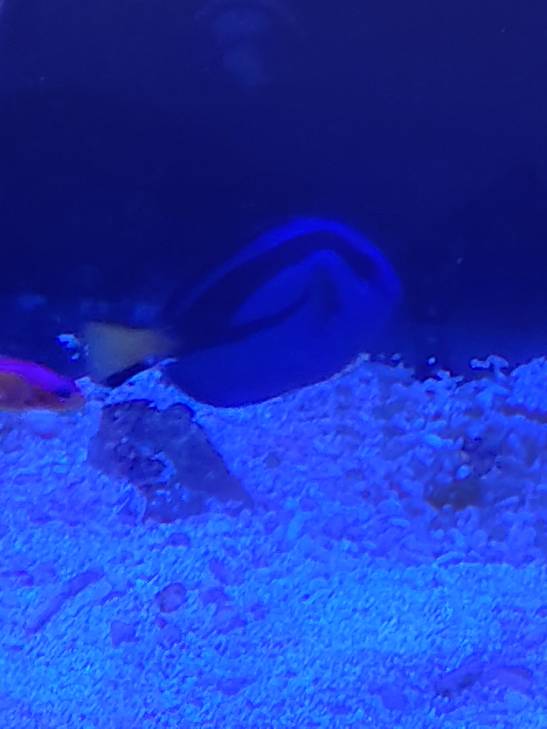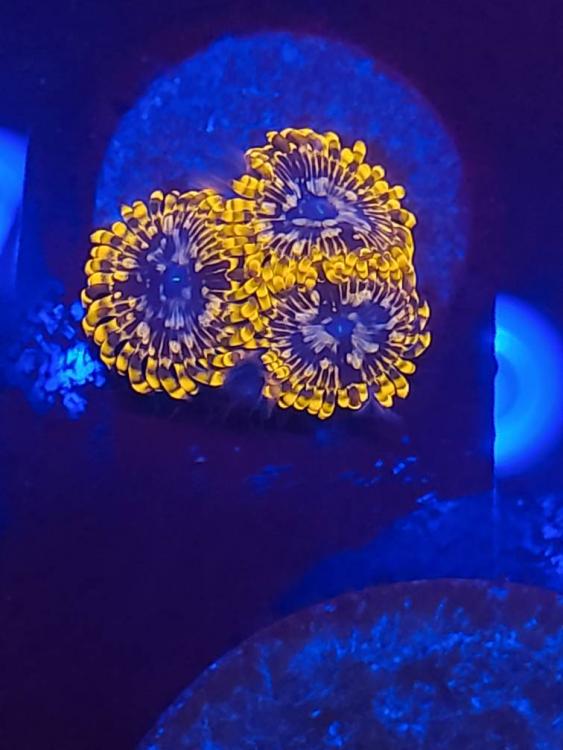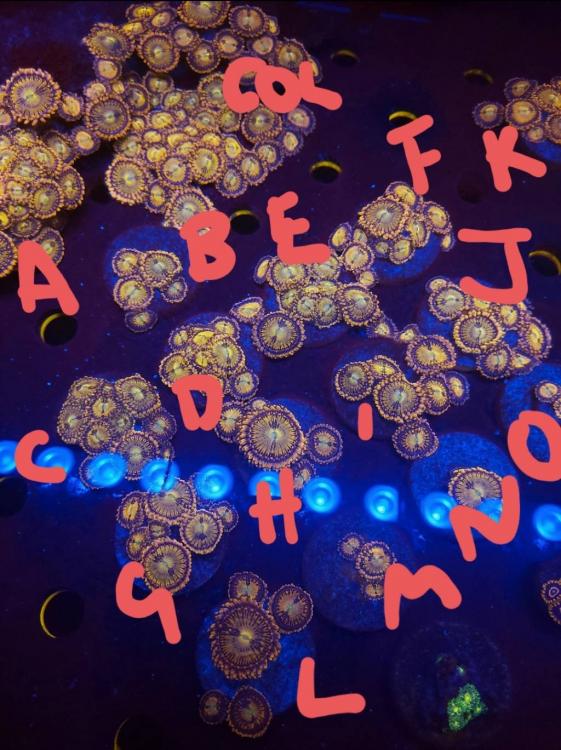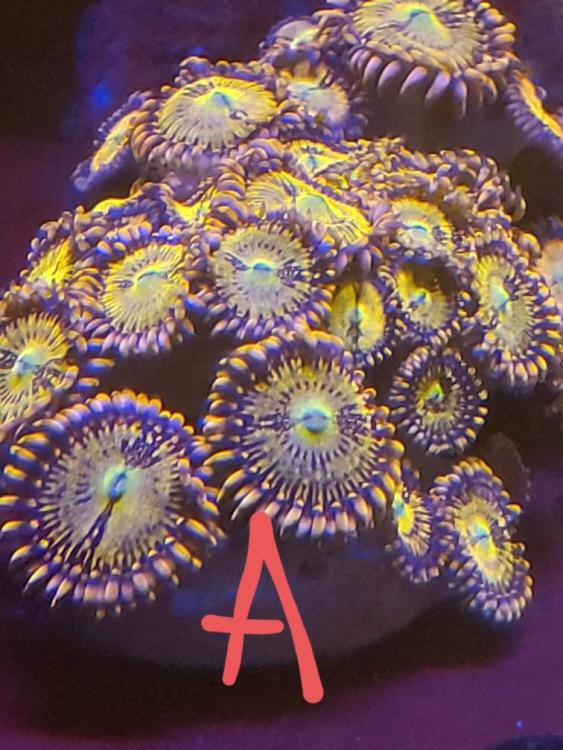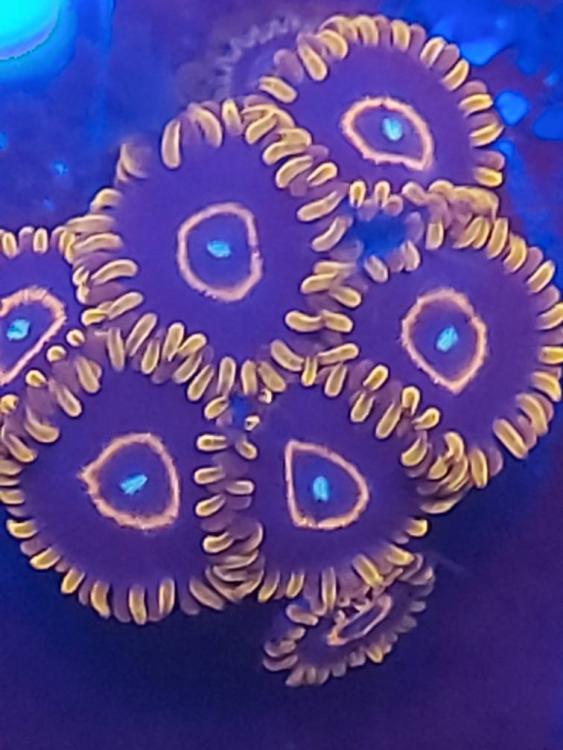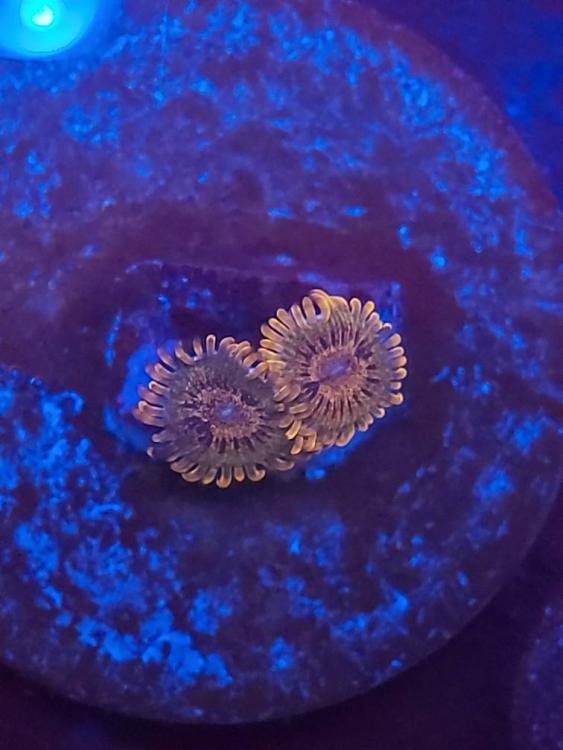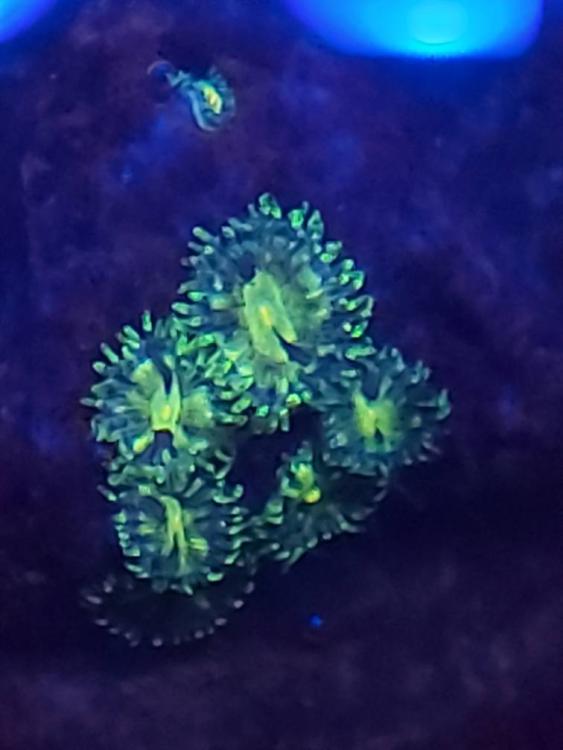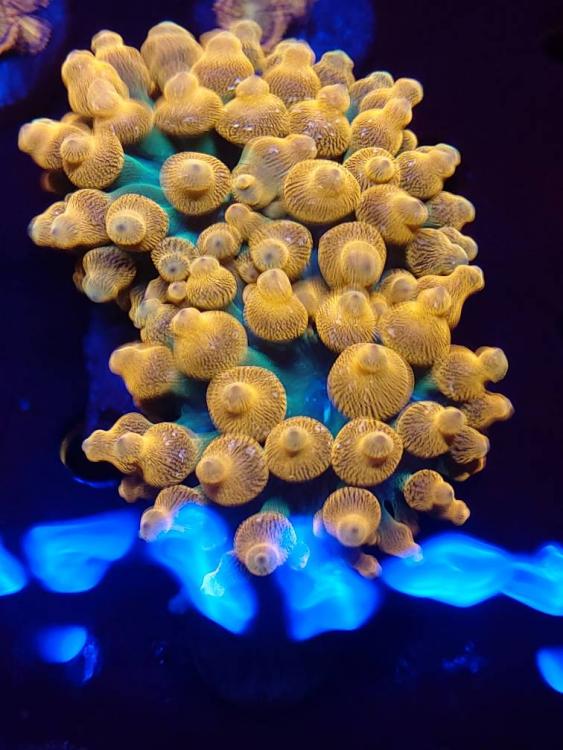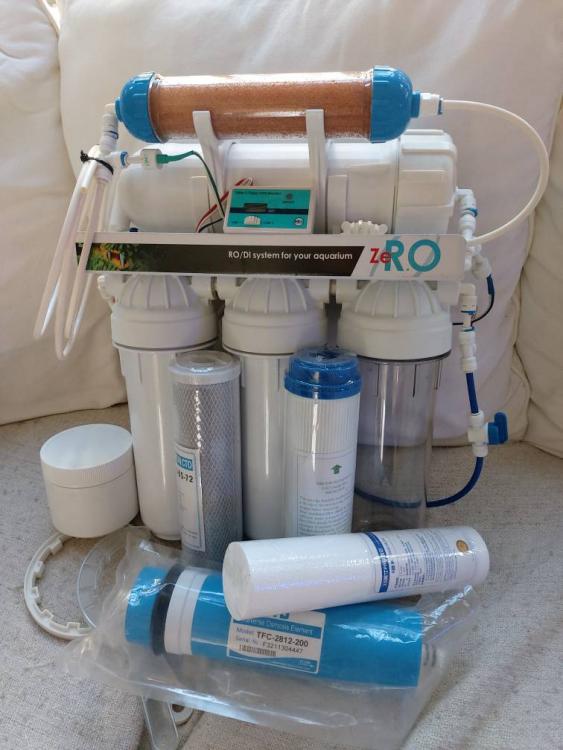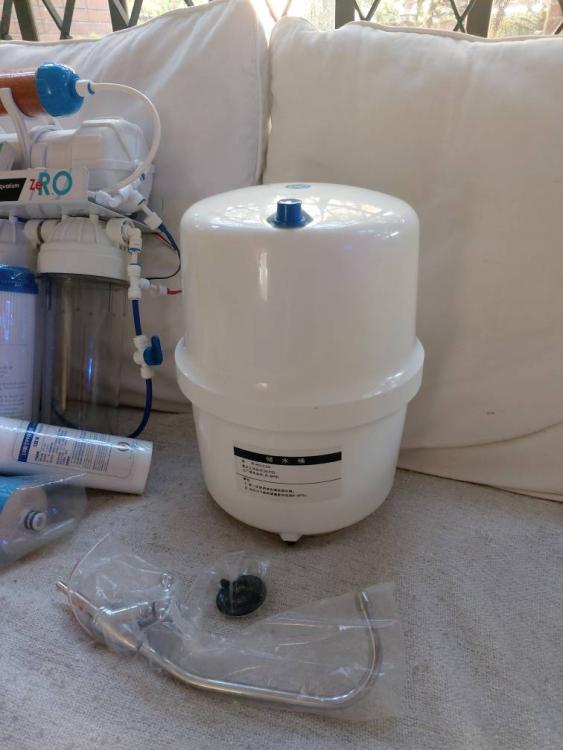-
Posts
313 -
Joined
-
Last visited
-
Days Won
25
R0B last won the day on May 18 2021
R0B had the most liked content!
Profile Information
-
Country
Singapore
Recent Profile Visitors
The recent visitors block is disabled and is not being shown to other users.
R0B's Achievements
-
Sold... pending collection. Thanks for the interest.
-
Due to decom, I am selling my remaining fishes... 2 inch Blue Tang ($25) eats anything (pellets, mysis, flake etc). Diadema Dottyback (FOC) Talbot Damsel (FOC) Deal near Haw Par Villa. WhatsApp 88080763 (Preference to those who will take all three fish). Thanks.
-
Update... Everything sold or reserved expect some of the Sakura. Items B, D, E, G, H, I, K, M, and O available.
-
Moving house, so looking to part with some excess Zoas and Anemones as part of my decom. Deal in West/Pasir Panjang near NUS. WhatsApp 88080763. ZOAs 1. Utter Chaos (super bright variant) 3pp $35 2. Pink Sakura multiple frags different sizes.. A 25pp+ $25 (see separate photo) B 5pp $7 C 10pp $15 D 10pp $15 E 10pp $15 F 11pp $15 G 8pp $10 H 5pp $7 I 7pp $10 J 9pp $10 K 8pp $10 L 5pp $7 M 3pp $5 N 2pp $5 O 2pp $5 Off camera item P 13pp $15 3. Red Hornets - 8pp $30 4. Speckled Krakatoa - 2pp $60 5 Butt munchers (In all honesty I am not 100% certain of the name of this coral so selling as wysiwyg) 7pp $30 ANEMONES 6. I have two 2½/3 inch Rainbow Bubble Tip Anemones @$35 each or $50 for both. (Commercially sold to me as a 'rainbow' nem and has split a few times since). According to Tidal Gardens description the rainbows are more orange and green then the normal RBTA. https://www.tidalgardens.com/rainbow-bubble-tip-anemone.html Naming conventions aside this is a really bright fluorescent nem more then any other nem I have had and one I will be sad to see go (photo doesn't do it justice). I also have some fishes and equipment coming up for sale too. Will post separately... WhatsApp 88080763.
-
The ocean has a salinity of 1.026 so that is a good target although some reefer prefer run a little lower (1.024 to 1.025). Very few people run it higher. So 1.027 is max. Assumung you want to increase it slowly over time. One way to slowly increase is to add a tiny bit of salt to your ATO. A little more aggressive is to do it over a series of water changes.
-
I have some you can have. TLF 500g.
-
The worst chiller would be one under powered for the task. Not only would it not be able the chill the tank, it would be on all the time using up electricity and venting hot air, which would be made worse if you keep the chiller indoors. A bad chiller would have no secondary temperature control to attach to, or has been plumbed in such a way that makes it inefficient - such as the chiller input and output run to and from same chamber for example, or feed pump is inappropriate (too fast or too slow). What I am trying to say is that even a good brand chiller implemented incorrectly would make it sub-optimal. That said here is my take on some brands Teco brand is very popular world wide as it is both reliable and good performance. The TK500 should be capable of happily keeping a 5 foot tank in perfect conditions, although is pricey. (It also has a built in heater). Hailea is another popular brand much cheaper, personally I have never had an issue with them my hp66a runs a 500L system and has been sat outside for 3 years and worked perfectly fine. They have just updated their model line so worth checking out. Other brands such as Artic also available (I never owned one so cannot comment). Chillers with own compressors and coils are possibly the most powerful and a lot of people use them here in Singapore. They typically range from 1hp to 3+hp. The only issue is inital cost (although they do pop up on the forum so good bargains to be had), running costs (can easily be kept down with external probe), installation placement, and ensuring coil is appropriate for reef tank (titanium coil is best), but they are easily serviced by any AC tech. Chillers arc in my mind essential. Not only do they keep your macro environment stable, but also cooler temps help keep dissolved oxygen levels optimised. So good luck in your search.
-
You shouldn't see any saline reduction to the level you mention in such a short period of time. There are very few factors that could cause salinity to drop. Usual suspects being... 1. Your salinity testing apparatus is not working or calibrated correctly. This could be caused by simple calibration issues or missteps, auto temp adjustment issues or malfunction, not throughly cleaned, calibration fluid being tainted/not accurate etc). Try testing your RODI water and see if it shows a negative number (if machine can read this) 2 Fresh water / lower salinity water was added into the system. What is/was the salinity of the water you added? Did you test it? Beyond that there really isn't much to account for a salinity fall. Before you try and correct it you need to make sure of the issues is an issue suggest you take some water to LFS and ask them to test for you. Good luck. Let us know how you progress...
-
Asking SGD$215 for a new 5 stage RODI system with brand new/sealed 5 micron sediment filter, 2 carbon blocks a new 200GPD RO membrane (plus DI Resin) System also comes with a triple TDS meter, that allows you to monitor filters health at various stages. Also comes with an auto cut off valve, along with a 350gpd flow restrictor which would allow the system to run continuously if needed. The system is completed by a refillable DI resin stage with new mixed resin pre installed, and a additional 400g tub of mixed resin included. (I also have a small pressure barrel and tap - see pic. This allows the ro to be used as a drinking source ... so if you also want let me know +$15) The system was used just a couple of times to test and has been in my store for a while as spare. I recently replaced the metal frame to fit an upgraded RO membrane housing. All the filters were also purchased recently. Deal in west, near Har Par Villa else I can also deliver if needed/agreed. WhatsApp me on 88080763 or PM me here. Happy Reefing.
-
Exactly. I think@JiaEn said it better than I could haha. To add... Ozone and UV are complimentary tools, but work in different ways. UV requires that the parasites are in close contact with the UVC light in order for the light to impact that organisms DNA. So they require the parasite to be in a specific spot at a specific time. Whilst Ozone is inserted into the water in sufficient numbers and goes off 'hunting' for organisms to bond with, oxidise and destroy. As such Ozone is way more effective. This is also why I find the current level of advice inappropriate. Not only does it ignore the air-bound vs water bound nature of Ozone, we have to remember that Ozone doesn't care what it destroys... it is a hunter-killer Hahaha. Hence, unleashing this psychopath in your DT is okay if there are some soft targets for it to latch on to (fungus, algae, pests etc). But unleash too much and it will kill all your beneficial bacteria and even start to impact corals and fish. (Remember that SPS slime coats have 400 times the level of bacteria in them then the surrounding water). Hence, the key is to have the lowest amount of ozone in the Display as possible whilst achieving your asthetic goals. My post was trying to highlight that Ozone has a lot of potential if only we used it differently. If implemented seperately away from the DT altogether, where it is allowed to do its job and then allowed to dissipate, Ozone will not only kill everything in the water but also alter the chemicals in your water positively. Hope that helps.
-
Forgotten Heros Part 3: Ozone When you mention Ozone to a fellow reefer you may get some strange looks, or illicit some interesting emotional responses. "Oh I didn't think people use that anymore" or "Are you kidding me. it will kill your dog and pollute the environment!", this is what I was told when I first said I was going to use Ozone. But my dog is still very much alive, and I would need to run my ozone generator on full blast for nearly three years to produce the same amount of Ozone as one bolt of lightening. Whilst yes there are some precautions and knowledge needed to use it, Ozone is an extremely valuable tool for the reefer and is starting to see a revival as we better understand how best to implement it safely and more effectively. Warning: This is a really long post. So get a cup of tea and settle in. I would also urge the use of cookies to maintain your calorie intake as this could take a while. Ok let's begin... So, what is Ozone? Ozone (O3) is made up with two bound oxygen molecules and an additional unstable oxygen molecule that loves nothing more than to split off and bind itself to other molecules in your tank. As it does so it reacts with various oxidizable inorganic and organic materials. Through the process of oxidation Ozone can decompose organics rather violently, and as such, this little unstable molecule produces some amazing results for the reef tank. (In no particular order)... Firstly Ozone will provide you with clear water (and I mean crystal clear!) as it eliminates impurities in the water, breaking organic molecules down so that the light waves are is no longer blocked or deflected by them. The result is the clearest water you can get in a reef tank. This ensures that all the lovely PAR and spectrum from your expensive lights actually reaches your corals. Secondly, Ozone will help you maintain high levels of disolved oxygen in the system. Once the water has been processed the Ozone turns back into oxygen, replenishing the oxygen levels in the water column. Third, Ozone like carbon can remove toxins in the water. However, O3 has significantly more cleaning power and needs little to no maintenance once set up. To put it in perspective Ozone has nearly twice the cleaning power of chlorine. By reducing toxins ozone reduces the impact of coral warfare, and effectively allows you to have more corals in a smaller space. Fourth benefit is that ozone cuts down the organics in the tank. This improves the mucus level of corals and combined with the secondary bromide production it has been known to improve polyp extension. Less organics also means less nitrates. Finally a quality ozone system should last 15 years. So for 'lazy' reefers like me it is ideal as once set up you shouldn't need to touch it for ages! (Although some maintenance is beneficial) So what is the right level of Ozone, and how best can you safely implement Ozone? One of the most important factors to understand in utilising ozone, is to understand how long Ozone actually survives within various systems. In the air O3 has a half-life of 12 hours, whilst in water Ozone's half-life is drastically reduced to just over 20mins, as such ozone dissipates 36 times more quickly in water than in air for a given concentration. This is where many people get mistaken about its relative safety and also where the choice of implementation begins to matter (Afterall a skimmer is an open air reactor, whilst an ozone reactor is an enclosed water based system... hopefully you see where I am going with this). So, with this knowledge of half-life in mind let's look at the two primary goals in using Ozone, water clarity and sterilisation. Goal #1. CRYSTAL CLEAR WATER... first some good news, It takes a relatively small amount of Ozone to keep your display tank super clear. My 500L DT system has a 300mg Ozone generator, which to be honest is way way way way over-powered for what I am using it for. Currently I have it set at just 10-15% (30-45mg/h). This keeps ORP (a sudo-measure of water cleanliness) at 350 and produces a noticeably clear water column. Typically Ozone in a display system is implemented in conjunction with a Skimmer. Whilst this is fine for a moderate DT setup, it is certainly not ideal if you need higher levels of O3 production due to the increased air/gas interface that a skimmer generates with the atmosphere. That said, for my DT setup I personally add Ozone to my skimmer by attaching the air from my ozone generators output to the air input of the skimmers silencer. The air input to the ozone generator itself is taken from an airline I have running outside my house and via a carbon filter. I do this 'outside air thing' as so to reduce co2 and for PH reasons (note ozone will not impact your ph), although you can simply pull air from anywhere that is dry. I use ozone resistant fittings and pipes post the ozone generator. Note, contary to popular belief you don't need an air pump. I made this mistake as in the past I used to have an air pump push air into the ozone generator, however I have been told by one manufacturer that this changes the amount of ozone generated, so the best idea if you need a pump is to find a vacuum pump and pull air through the ozone cell. Possibly an even better solution is to simply let the skimmer draw the air as needed through the generator - which is much easier and doesn't cause issues with your skimmers performance. The skimmer sucks in the Ozone gas and mixes it into the water column. As a skimmer produces bubbles it mixes the ozone gas with the water by increasing the surface area of the water within the skimmer chamber and allowing for more gas exchange to occur. HOWEVER, this gas exchange works both ways as gas can not only be absorbed into the water column it can be expelled too. This is where the first potential issue arises, just as skimmers are great at releasing CO2 through 'degassing', the agitation of water will allows for a higher proportion of the ozone gas to escape back into the atmosphere. This is where it can potentially lead to issues, especially if it is left to build up, or you are inextricably producing large amounts of O3. As such skimmers are not the most effective methods of installing Ozone. Typically for a DT the amount of O3 used should be relatively small and so any potential issues are easily delt with by having some carbon sitting on top of the skimmer cup (or you have a 3d printed sleeve). Whilst not perfectly ideal these solutioms are good enough fixes for low level O3 generation. That said, a better way to implement O3 is to have a dedicated Ozone reactor (or passive inline Ozone diffuser). These machines mix the Ozone in an enclosed space, vastly reducing the amount of air bound ozone and ensuring ozone is kept in the water column longer where it can dissipate more easily. From what I can tell any sealed reactor made with cast acrylic could be converted to O3 usage as long as you use ozone resistant connections and fittings (special 'O' rings for example). Buying a purposefully designed O3 reactor is always best, as all you need do is you add in some plastic bioballs to slow down the flow of the gas, increasing the reactors dwell time. One way to control the O3 generation is to run it for just a few days each week (friday and Saturday so you DT looks good for the weekend haha). This way you can simply turn it on for an hour or two each day. This is a reasonable way to use ozone without any other controls (like ORP controller) in place. I have, however, read that a constant very low level of O3 is much better than switching it on and off. [Hold on, I thought you said Ozone can give 'pest free water', and I definitely recall you saying it could save me money?] Well, glad you raised that, we are just getting to that part now. So take another sip of tea, grab another cookie and let's look at the other ozone related goal we had in mind, sterilisation. Goal #2: STERILE WATER. At Ozone levels of just 35-50mg/hr you won't be getting the full benefits of Ozone, as some toxins can still exist and you haven't really done much to kill off water bound pests. Now, whilst you may be tempted to turn the displays Ozone generator way up high (afterall more is better right?) please don't do that. High levels of Ozone will kill off your beloved DT bacteria relatively quickly, leading to all sorts of issues. At an O3 rate of 1.5-2ppm, 90% of your hetrotrophic bacteria will die with just 35 seconds of exposure. O3 not only improves water clarity it is a very efficient combatant of viruses, bacteria and fungus, however at higher rates it can produce some insoluble compounds which would need to get removed (carbon is your friend here). My view is best not have these in your DT, so how can you get the best out of an O3 system?? A more effective manner to opperate ozone is to use it in a seperate system all together away from your DT. Here you can sterilise and effectivrly 'recycle' your water. This is how it works in many public aquaria, where replacing vast amounts of water via traditional water change methods is inordinately expensive. As an alternative to water changes they will siphon water out of the return and pump it into a seperate holding container. With no danger of hurting any livestock and having a controlled enclosure the water is subjected to significantly higher levels of Ozone. Sterilising it. The water is then allowed to settle as the ozone naturally dissipates leaving nothing but sterile, oxygen replenished, crystal clear, bug free water. If you have watched any reasonable amount of reef related youtube you would have no doubt heard that to process water to an effective sterilisation rate using ozone requires thousands of mg/hr. This is true, to process large batches of water takes alot of O3. However, this misses an important point, as hobbiests we don't actually need to process large amounts of water in one go. We can batch process small amounts overtime, vastly reducing the amount of Ozone needed, and this is where hobby level ozone equipmemt can be configured to cope with this goal (I am currently setting this up on my own aquarium so will be able to give a full breakdown in future posts) That said there are two challenges we need to overcome. Firstly is to calculate the amount of Ozone production needed to reach 'sterilisation' levels. Secondly in any system with higher levels of ozone we want to avoid the production of air-bound ozone as much as possible. Challenge 1. How much ozone needs to be produced? Let us examine this further with some math... an ozone dose of 0.4mg/L for 4 minutes is regarded an an effective treatment for pre-treated water (pretreated in that your water first went through an rodi system, then normal reef filtration). Lets focus on the 4 minutes... Here, a recirculating ozone reactor can control the dwell time by reducing the flow inside the reactor via bio balls, also if it has a DC controllable pump you can change the rate at which the reactor circulates. A recirculating reactor also by its nature increases the contact time. As such our focus can shift towards the level of Ozone production need to process the water in the reactor, in this case 4ppm or 4mg/hr Time for math... There are some complex ozone equations out there involving pressure, but in order to keep things simple Mg/L = Ozone mg/hr x 0.00440288 / LPMx3.785 As such we can see that a 400mg/hr ozone generator would need a flow of approximately 1.5ltr a minute to generate a concentration of 4ppm. At this flow rate a 30L ozone reactor would take just under 20 minutes to process the water held within it sufficiently. (Someone correct my math if I got this wrong hahaha). As such this all seems well within the capabilities of hobby grade gear given enough time. If you want to go 'full on' with your sterilisation goals you could always cover off any gaps by adding in UV. (Ozone in my mind is very much a complementary tool to UV) Remembering that UV works differently then ozone in that it stops bacteria from multiplying by destroying DNA, it doesn't necessarily break down organics, nor stop toxins, etc etc Okay, take another sip of tea and possibly grab an extra chunky cookie for we are moving on to the second challenge of avoiding air-bound ozone and I will talk about the set up I am putting together. Challenge #2. Reduce air-bound ozone to a minimum. So a way to avoid this is to pump water into a seperate air tight container (nothing more then a drum with a good fitting screw lid). Very similar to how many mixing stations are set up (maybe you can even repurpose one as you wont really be needing it anymore hahaha). You will need a way to get water in and out of the air tight container, a pump to send water to the ozone reactor and later back to the tank. You would also need an air valve to allow for the intial displacement of air (by opening the valve to allow the water from the return to enter the container displacing the trapped air, and closed once the container is full. Maybe have a small carbon filter on the end of the air valve if venting back into a room). So how does this 'recycling system' work? The air valve is opened and saltwater is pumped from the return section, filling the drum completely full. The air valve is then closed meaning the container is now airtight with as little air as possible inside. The ozone generator is switched on and the water flows through the ozone reactor at the appropriate concentation. As the ozone generator and the container are connected no air enters the system. In this basic set up the water from the reactor goes back into the airtight container. Water is cycled from the chamber into the reactor and back again multiple times until it's all be processed. Then we switch off the ozone machine a leave it alone to let the ozone turn into oxygen. The water then passes through a carbon filter (see bromate issue below as to why we do this) before making it's way back into the main system. What we are doing is simply recycling the tank water. This has some major savings over traditional water changes as it reduces the money needed for new water, RODI consumerables and even salt! I guess this is why public aquariums have used this method historically. Will it work / save money for every reefer? Well you may want to consider that the cost of an ozone generator is approximately 1-2 buckets of premium salt, an ozone reactor costs another 3 buckets and a state of the art double air dryer another 5 buckets. Remembering the ozone equipment should last 10-15 years. An additonal benefit is that this 'recycled water' is available almost daily (depending on how long it takes to process batches and let the ozone disappear). As such you can significantly increase your 'water change' schedule with no increase in costs* (* pro tip ... it is always good to ICP test the water coming out of the recycle water system espcailly when you first implement, and a few times afterwards, to understand what is going back into your tank, as certain elements may get depleted / added overtime requiring additional management) So let's recap... I am proposing two methods for two seperste goals. Firstly a low level of ozone system (via skimmer or O3 reactor) for the display system, producing asthetically clear water and improved dissolved oxygen. Keep the levels as low as you can get away with. Secondly using higher concentrations of ozone in conjunction with a reactor to recycle your water in batches replacing traditional water changes What else is important to know? I hope you noted I mentioned the need to run carbon post ozone production multiple times. This isn't to capture the Ozone per se, but to reduce the impact of any by-products of running ozone, namely OPO's and Bromate. To quote the king of reef alchemy Randy Holmes Farley "Ozone also has a dark side. When reacted with seawater, ozone produces a variety of highly oxidized halogens such as BrOH and BrO3-. If the ozone produced oxidants are not largely removed with activated carbon, they may enter the aquarium and be hazards to the most sensitive organisms in the aquarium". So in both implementations (goal 1 and goal 2) carbon is still very much important. Another impact of Ozone is that it will convert ammonia into nitrate. So if there is ammonia in your tank and you run Ozone then nitrate will result... it would have happened anyways through the nitrogen cycle just you will accelerate the process which may result in initial spikes. So whilst ozone can reduce organics in the tank before they get a chance to turn into ammonia it may be necessary to keep an eye on your nitrates whilst running ozone. Like other chemicals and gases we use in the hobby Ozone if inappropriately used can be dangerous. I mean you wouldn't drink a bottle of trace elements, or pump CO2 into your living room (well I hope not). So use common sense, Ozone needs to be treated with respect. Whilst Ozone in small doses is not really a safety concern less than 0.25ppm/25mg.hr, You shouldn't take any risks and it is prudent to have safety measures in place. These include having air bound carbon filters where there is a chance of gas escaping (skimmer cup, or end of air valve). Major ozone issues tend to come from not using the correct fittings or pipes leading to O3 gas leakage, So make sure your ozone system is only fitted using ozone resistant connections, pipe and fittings. As an additional control and safety measure on your DT you should use an ORP controller to control ozone generators. So if ORP goes above a set value of say 375 for the DT then it will switch off the ozone generator. I don't want to down play Ozone as an issue. But feel the dangers are over blown and just like other gasses we use in the hobby it needs to be used appropriately and I urge you to do your own reading around the subject. Any other tips? Well, an Ozone generator is much more effective if the air it uses is either oxygen rich (pure oxygen is used in some commercial implementations) and/or is very dry. You can buy special air dryers from manufacturers like Ozotech (IQ20/40 range). Damp air in an ozone generator will cause nitric acids to build up inside the ozone cell, which reduces the ozone generators capability to produce ozone consistently. Although it should be noted that good quality Ozone generatoring corona cells can be cleaned simply with warm water and dried with compressed air to get rid of any acidic build up (possibly the only maintenance you need to do... apart from replacing carbon now and again) Another thing to look out for is the quality of the equipment, any Ozone generator that is made out of plastic I would personally steer clear of them. Given the aforementioned issue with having correct fixtures and fittings unless they tell you what the plastic couplings are made from, I doubt these plastic parts are ozone resistant and thus, COULD be prone to leaks in the future. That said I am in the process of buying one to simply take it apart and compare with my metal one. Also only use ozone generators designed for aquarium usage, not those air filtration systems you see on Aliexpress. So there you go you made it to the end - one cup of tea and many cookies later. Congratulations, you should get a medal or something. I hope this was useful and hope this helps you reimagine the use of Ozone in your system, I hope it also reignited the prospect of low cost water changes. IMHO, Ozone with its unstable molecule, is not only safe, but if implemented appropriately can work wonders for your reef. Good luck and Happy Reefing.
-
Singapore is awesome. There is a thriving community with ample stock of both corals and fishes. In UK you may be lucky to have a single shop within 50kms of you. Also Singapore has a great second hand market, so always good deals to be had if you are patient. If its engagement regarding queries and questions, and how-to's then there are enough great reefer here ready to share. I have learnt a lot from many on this forum. Plus you have other worldly resources such as youtube, reef2reef and BRSTV hahaha. In the UK and USA yes there is a lot more engagement on forums but honestly half of the advice given is really bad. At least here we try to be encouraging and not troll people. Singapore is a great place to have a reef tank. There are some great shops, and help will always be given to those that need it (I think that is a Harry Potter quote hahaha). Good luck with your reefing journey you have picked a great place to start a tank!!
-
Keep sharing your build, I wish more tanks used closed loops! Although technically yours isn't 'closed', which is why it is so interesting!! Closed loops are fairly simple to implement but Semi-closed (Open) loops are much more challenging. Firstly you have the risk of siphoning. So it looks like the check valve will help (but be warned they are not foolproof and need maintaining). I believe you have placed a valve above the check valve which is a good idea if you need to turn off the loop for any reason (maintaining the check-valve hahaha). The other challenge with a semi-closed loop is flow. To service the water needs of running two return pumps out of your sump you will obviously need to have a lot of flow out of the tank and through the sump. So basically is your overflow sized for potentially double the normal flow? And will the increased flow through the sump impact anything like filtration? I think you made a great choice with the Algea Reactor as then this isn't impacted by the flow. Also an extra tip, if plan on using the wave function of modern dc pumps becareful how this impacts your ATO set up. Certainly interesting to have the semi-closed/open loop on a DT Really interested to see how you make it work. Looking great. Good luck.






